Ilamparthi: the boy who makes Pragga and Nihal look old!
The chess boom in India has reached dizzying heights. Praggnanandhaa became an IM at the age of 10 years and 10 months. Nihal Sarin achieved the feat at 12 years 8 months. Now we bring to light another chess prodigy who makes Pragga and Nihal look old! Ilamparthi A.R. from Chennai is the highest rated chess player in the world in the under-eight section. He has tremendous passion, which is shown by the fact that he works for ten hours a day when he doesn't have school! In this article, we not only tell you more about this prodigy, but also present to you his games with annotations by the young boy himself!
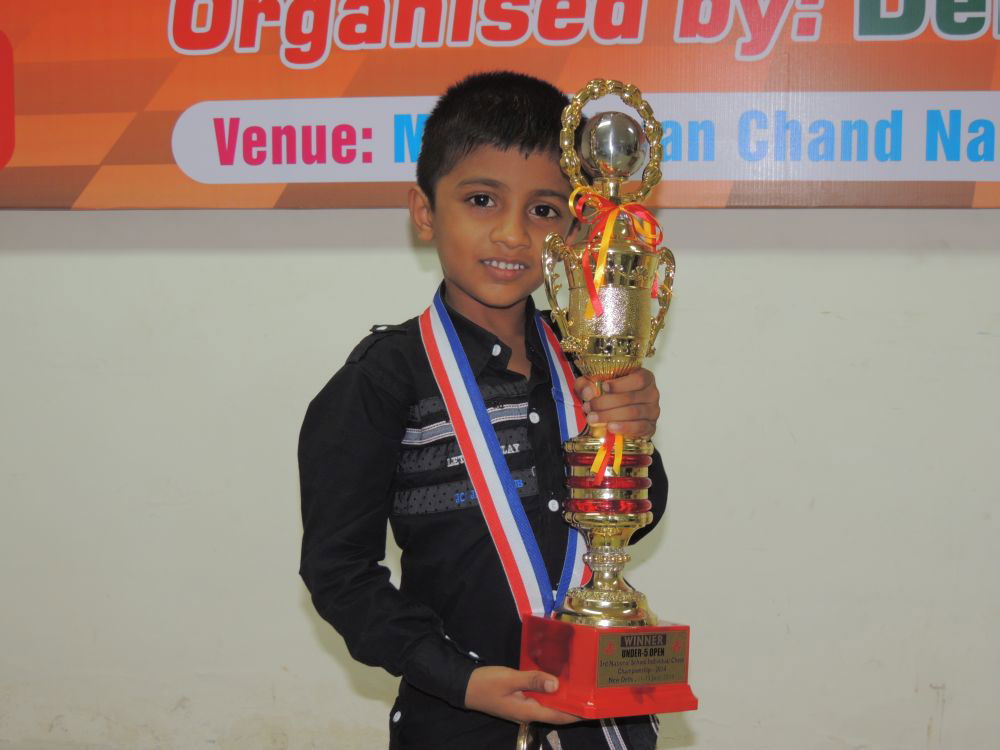
He is just eight years old but already boasts of a rating of 1765. This makes him the world number one in the under-8 section. This rating also makes him India number one in the under-9 category. He played some excellent chess at the Delhi (category B) and Chennai International 2017 to gain 235 Elo points! In his short chess career till date, he has already played more than hundred tournaments including national, state and district events.
Meet Ilamparthi A.R., one of the brightest talents of Indian chess. The boy will turn eight on 28th of March 2017, but he has been playing chess for nearly four years now! Ilamparthi was five years and six months old when he received the rating of 1070. He has been on a mission ever since, gaining 700 Elo points over the last two and a half years!
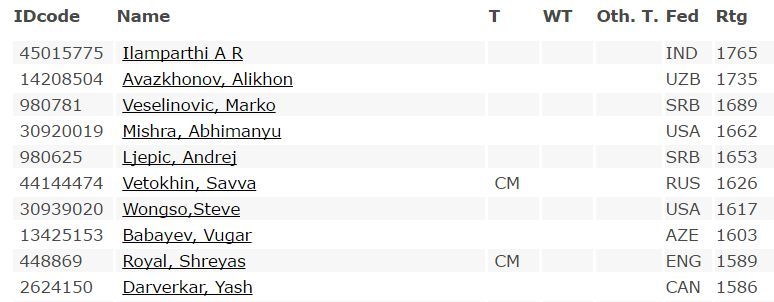
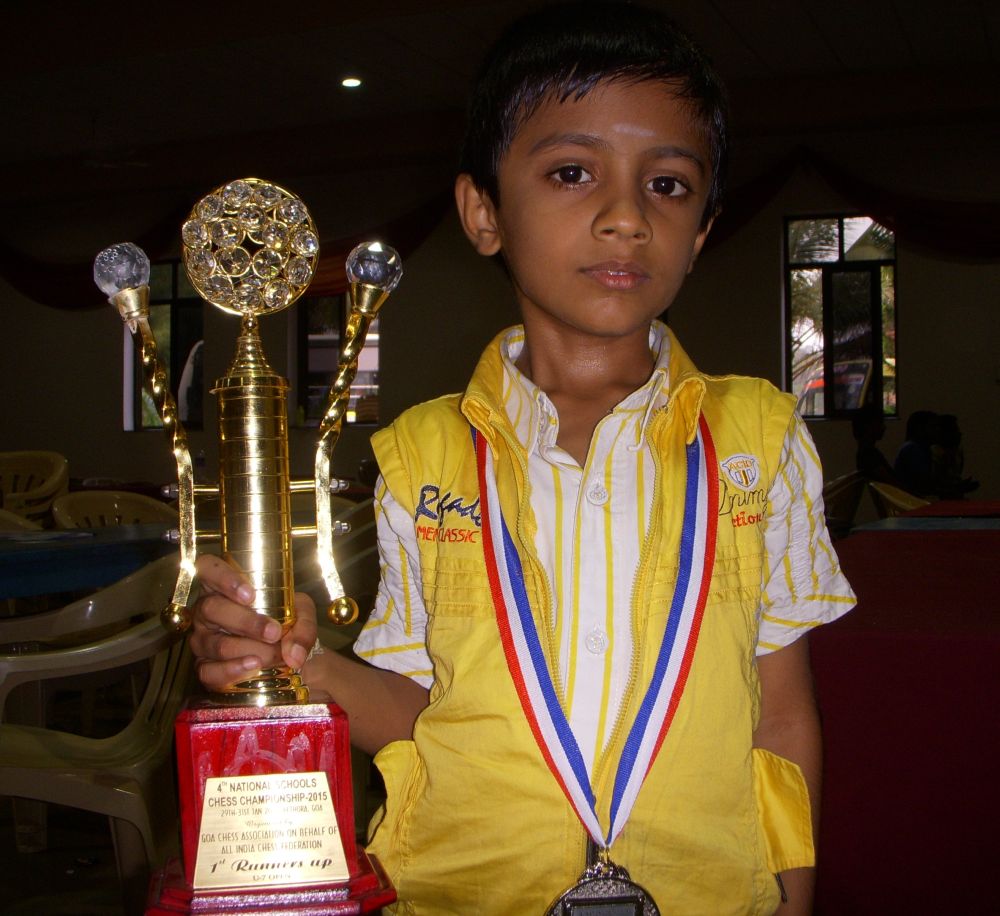
Ilamparthi is very much interested in chess. He started playing the game when he was four and has never looked back. Ever since he has started participating in tournaments at the age of five he has more often than not finished in the top three spots. For a young boy he clocks some impressive hours of chess practice - 3 to 4 hours on a weekday and more than 10 hours on weekends and holidays. This truly shows his passion and ability to work hard.
Speaking to Deccan Chronicle his coach Ravichandran of Mount Chess Academy said, "I have no doubt Ilamparthi's potential. He will surely be an International Master before he turns eleven. When I first saw him I straight away knew he was a special talent. Ilamparthi stands out from his peers thanks to his ability to solve chess problems with effortless ease. While others would be setting up the position, Ilamparthi would have already found the answer. He is so good that I had to ask a noted coach Mari Arul to train him."
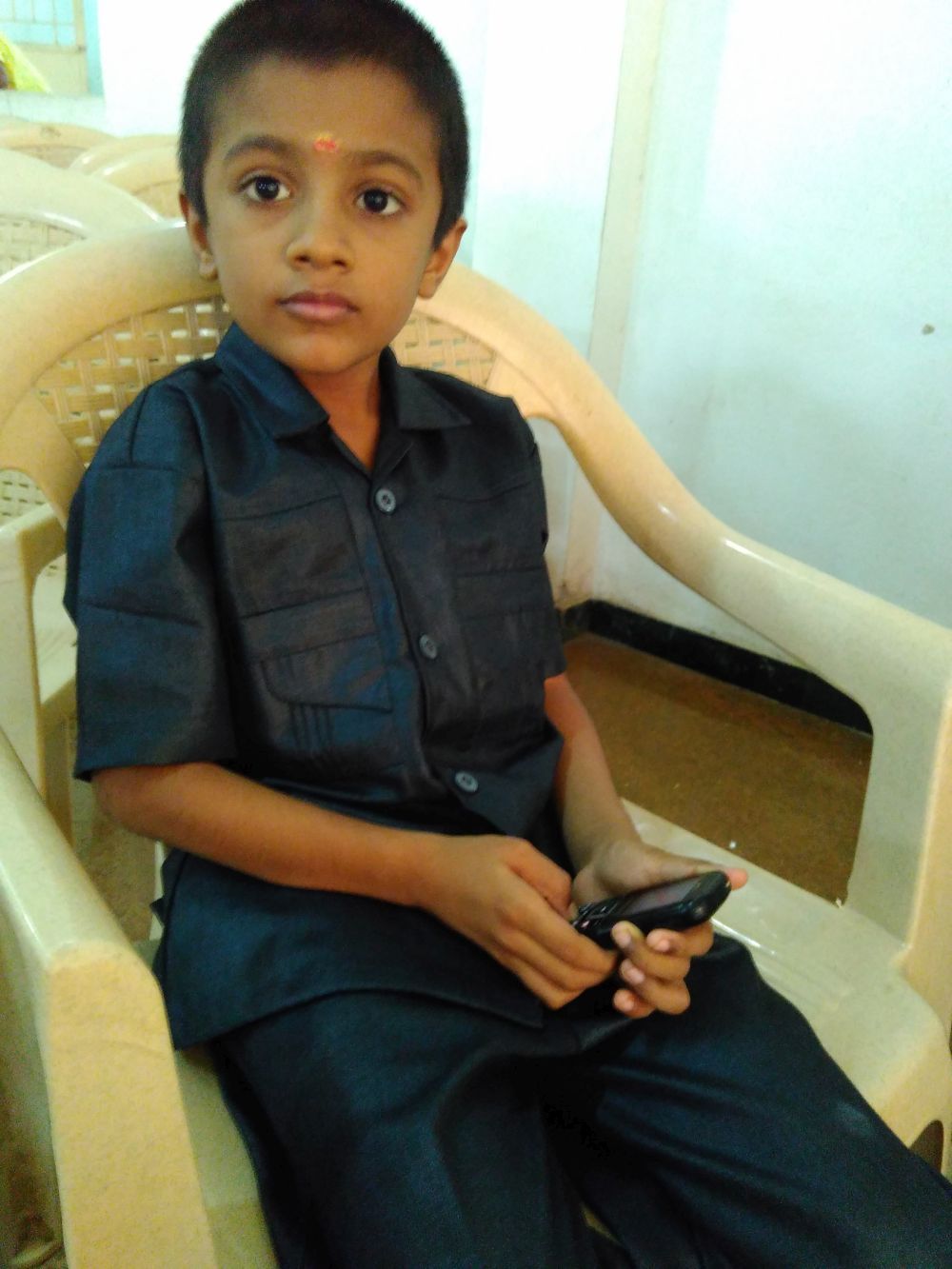
Ilamparthi's father Ravikumar, who works as a programmer in a company dealing with computer education, says,"I used to play chess for recreation. When I taught him the basics, Ilamparthi picked them up instantly. He has the patience and passion to concentrate for long hours. On holidays he trains for as long as ten hours with the help of books and computers."
The best way to understand the strength of a player as young as Ilamparthi is by seeing his games and annotations. We asked the boy to send some analysis of his own games and we now present them to you. Have a close look at not just the moves, but also his notes to understand Ilamparthi's deep understanding at such a young age.
The first game deals with an exchange French, where from a symmetrical position Ilamparthi grabs space and is able to tactically outplay his higher rated opponent.
[Site "?"]
[Date "2017.01.10"]
[Round "5"]
[White "ilamparthi, Ravikumar"]
[Black "sudhir kumar, Behera"]
[Result "1-0"]
[ECO "C01"]
[WhiteElo "1529"]
[BlackElo "1758"]
[Annotator "Ilamparthi"]
[PlyCount "48"]
Nbd2 {White's plan is to play b3,Bb2 and try to play c4,Ne5,f4 and Ndf3 and
attack(White has the space advantage)} (8. Be3 {Bishop is ugly on e3}) 8... Be6
9. b3 c6 10. Bb2 Nbd7 11. c4 (11. Ne5) 11... Rc8 12. Ne5 Re8 13. f4 Nf8 14. Qf3
Rc7 15. c5 Be7 16. Bc3 {Black is tied on the Kingside so,White is trying to
launch a Queenside attack} b6 17. b4 Bc8 18. a4 N6h7 19. b5 $1 (19. a5 b5 20.
Nxc6 Rxc6 21. Bxb5 Bd7 (21... Re6 22. Bxe8 Qxe8 23. Qxd5 Re2 {Black is having
some counterplay} 24. Rae1) 22. Bxc6 Bxc6 23. Rab1 a6 $17 {Black wants to play
f5,Nf6,Ne4 and block the e file if White plays Ne4 de4 Black is having the d5
square and Black is close to winning}) 19... Bf6 20. Nxc6 $18 Rxc6 21. bxc6
bxc5 22. Rae1 cxd4 23. Bxh7+ Nxh7 $4 (23... Kxh7 24. Ba5) 24. Ba5 $1 Qxa5 1-0
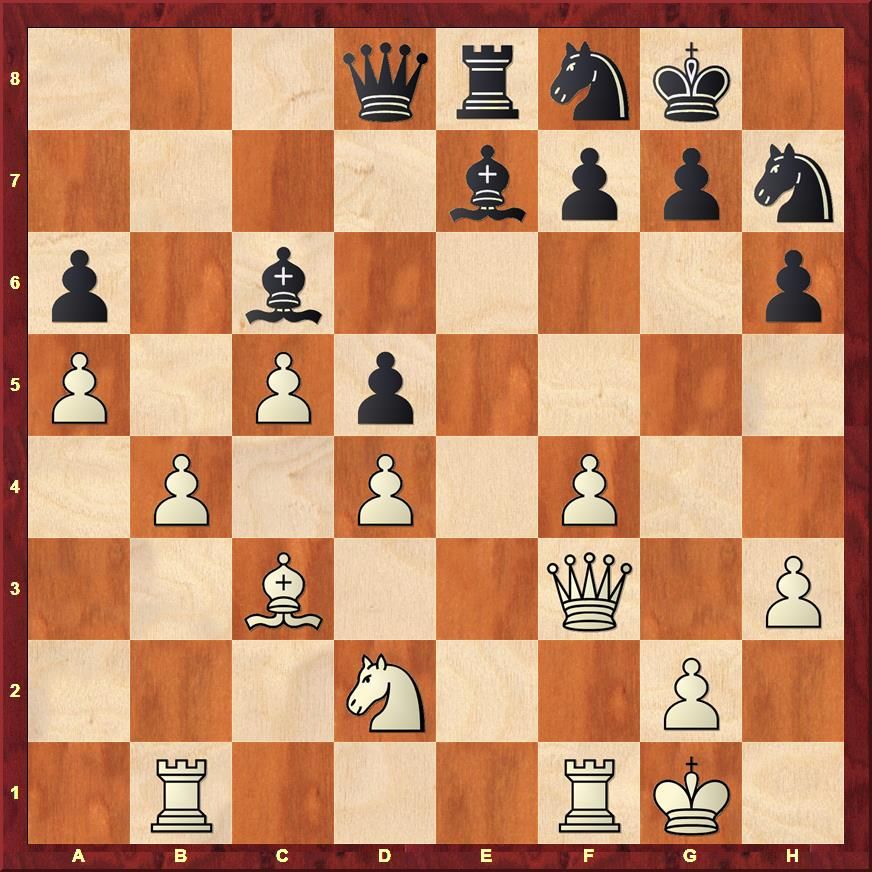
About the above position Ilamparthi writes, "Black wants to play f5, Nf6, Ne4 and block the e-file. If White plays Nxe4 then after dxe4 Black is having the d5 square and is close to winning." This clearly shows some sort of schematic thinking and the fact that the boy can think in terms of plans rather than just concrete moves.
The next game is very pretty. Ilamparthi's opponent plays the London System and the seven-year-old is up to the task, playing some very innovate ideas in the opening and following it up with powerful middlegame play.

Another example of Ilamparthi's excellent understanding is the above position. He writes, "White cannot play d5 and close the Bishop on b7 as the c5 square would be weak, and the bishop on g7 would be very active. And if I did not play cxd4, White would play d5, the c5 square would be missing."
[Site "?"]
[Date "2017.01.25"]
[Round "10"]
[White "begum, Masuda(Bangaladesh)"]
[Black "ilamparthi, Ravikumar"]
[Result "0-1"]
[ECO "A48"]
[WhiteElo "1831"]
[BlackElo "1529"]
[Annotator "Ilamparthi"]
[PlyCount "50"]
O-O c5 (7... b6 8. c4 Bb7) 8. c4 cxd4 9. exd4 b6 {White cannot play d5 and
close the Bishop on b7 as the c5 square would be weak.And the bishop on g7
would be very active.And if I did not play cd4 and if White plays d5 the c5
square is missing} (9... d5 10. Nbd2 dxc4 (10... b6 11. Rc1) 11. Nxc4 $14) 10.
Qe2 Bb7 11. d5 $6 (11. Nbd2) 11... Nc5 12. Nc3 (12. b4 $2 Nh5) 12... a6 13.
Rac1 (13. a4) 13... b5 {Black is slightly better because the d5 pawn is going
to be loose} 14. b3 (14. cxb5 axb5 15. Bxb5 Nxd5 16. Nxd5 Bxd5 $17 {a2 and b2
pawns are like ripe fruits!}) 14... b4 15. Nd1 (15. Ne4 Ncxe4 16. Bxe4 Nxe4 17.
Qxe4 e6) 15... a5 {Black is going to break to create an open a file} 16. Bd2
Ba6 {black is threatening Nd5} 17. Ne3 (17. Ne1 {White is completly tied} Nfd7)
(17. Nb2 $2 Nxd5 18. cxd5 Bxb2 $19) (17. Be3 $2 Nxd5 $1 18. Bxc5 Nf4 19. Qe3
Nxd3 20. Qxd3 (20. Bb6 Qb8 21. Qxd3 Qxb6 $17) 20... dxc5) 17... Nh5 18. Nc2 (
18. Ng4 f5 19. Ngh2 Nf6 20. Ne1 Nfe4 $36 {Black can play Qb6 and a4.White
cannot kick the e4 Knight.}) (18. g3 Qd7 19. Kh2 f5 $36) 18... e5 $17 19. dxe6
$8 Nxe6 20. Be4 $2 (20. Nxb4 $2 axb4 21. Bxb4 Nhf4 22. Qd1 Nxd3 23. Qxd3 Nc5
24. Qe3 (24. Qd2 Qb6) 24... Re8 25. Qd2 Ne4 26. Qe1 d5 $17) (20. g3) 20... d5 {
Using the pin on the a6-f1 diagonal.} 21. Bd3 (21. Bxd5 Qxd5 22. cxd5 Bxe2 23.
Rfe1 Bxf3 $19) 21... Nhf4 22. Bxf4 (22. Qe3 Nxd3 23. Qxd3 dxc4 24. Qxd8 Raxd8
25. Rfe1 c3 26. Be3 Bd3 $19) 22... Nxf4 23. Qd1 Nxd3 24. Qxd3 dxc4 25. Qxd8
Rfxd8 $19 0-1
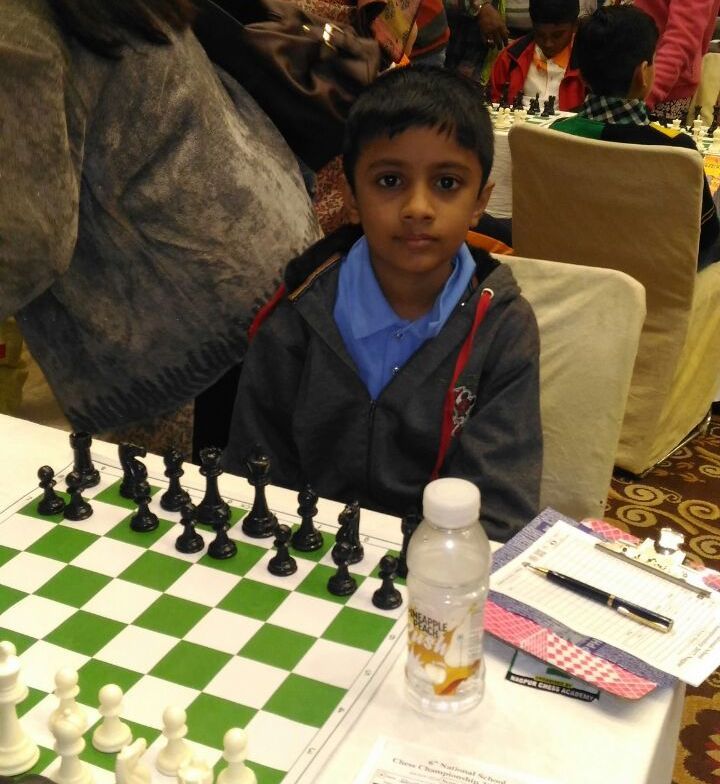
The final game that I would like to show you is without any word annotations, but just have a look at how Ilamparthi tries to make use of the bishop pair and plays smoothly in the opposite coloured bishop endgame.
[Site "?"]
[Date "2017.01.10"]
[Round "6"]
[White "abhishek, Jaiswal"]
[Black "ilamparthi, Ravikumar"]
[Result "0-1"]
[ECO "E62"]
[WhiteElo "1806"]
[BlackElo "1529"]
[Annotator "Ilamparthi"]
[PlyCount "96"]
(7. Qb3) 7... Nbd7 8. Nh4) 7. O-O e5 8. dxe5 Nxe5 9. Nxe5 dxe5 10. Qc2 (10.
Qxd8 Rxd8 11. Bg5 Re8) 10... c6 11. Bg5 Qc7 12. Rad1 (12. Rfd1) 12... Bf5 13.
Qa4 (13. e4 Be6) 13... a6 14. Be3 Rfd8 15. Qb3 Nd7 16. Rd2 Be6 17. Qa4 Nb6 18.
Rxd8+ Qxd8 (18... Rxd8 19. Qa5) 19. Bxb6 Qxb6 20. Qb3 Qxb3 21. axb3 Rd8 22. Rd1
Rxd1+ 23. Nxd1 f5 24. Kf1 Kf8 25. Nc3 Ke7 26. Na4 e4 27. f3 b5 28. Nc5 bxc4 29.
Nxe6 (29. bxc4 Bxc4) 29... Kxe6 30. bxc4 Bxb2 31. fxe4 fxe4 32. Bxe4 Kd6 33.
Ke1 a5 34. Kd2 a4 35. Bb1 Kc5 36. Ba2 Be5 37. Kd3 Kb4 38. Bb1 $2 (38. c5 $1 $11
) 38... c5 $1 $19 39. e3 Kb3 40. Bc2+ Kb4 41. Bb1 a3 42. Ba2 h5 43. Kd2 g5 44.
Kc1 g4 45. Bb1 h4 46. Kc2 (46. Bf5 a2) (46. gxh4 Bxh2) 46... hxg3 47. hxg3 Bxg3
48. Kc1 Be5 0-1
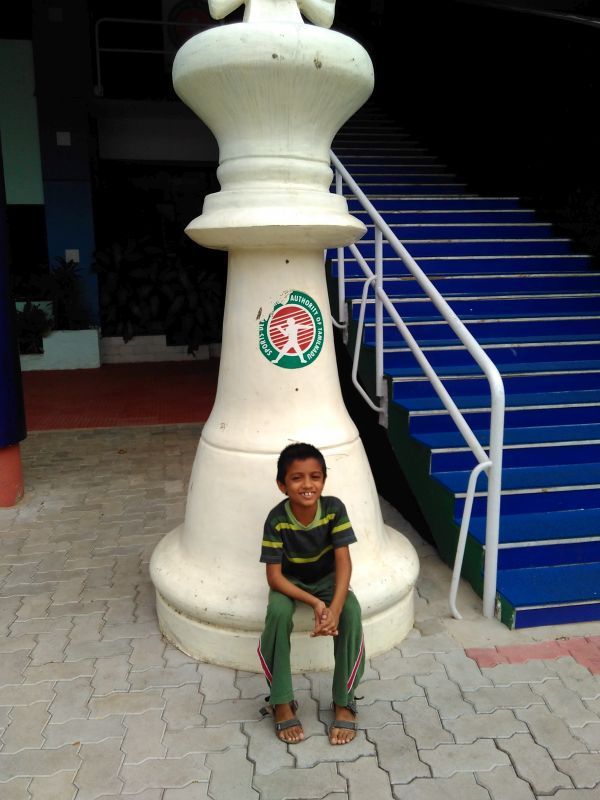
It is quite obvious from his games that Ilamparthi has great potential. If given the right direction and backing he is sure to make it big in the years to come. However, talent in itself is not sufficient. In the past, he had been selected to participate in the Asian Schools U-5 Chess Championships-2014 (held at Korea), Asian Schools U-7 Chess Championships-2015 (held at Singapore) and Asian Schools U-7 Chess Championships-2016 (held at Iran), but he was unable to participate as the cost was too high for the family to afford.
He has now been selected for the Asian Youth Chess Championship-2017 (to be held at Tashkent, Uzbekistan) from 31st Mar 2017 to 10th Apr 2017 and World Youth Chess Championship-2017 (to be held at Brasilia, Brazil from 21st Aug 2017 to 31st Aug 2017).
Appeal
Ilamparthi's father writes, "For participation in any international tournament, it costs us around 2 lakhs to meet the travel, visa, accommodation charges, etc. and in case of a national tournament (to be conducted except south India), it takes around Rs.20,000 to meet the expenses. He should play a minimum of 2 international and 5 national tournaments per year. Hence, it would cost around Rs. 5 lakhs per year. As we are from average income group, it is very difficult to meet the expenses and hence I appeal to the philanthropists and chess community for their generous sponsorship to my son who is being trained under an expert coach."
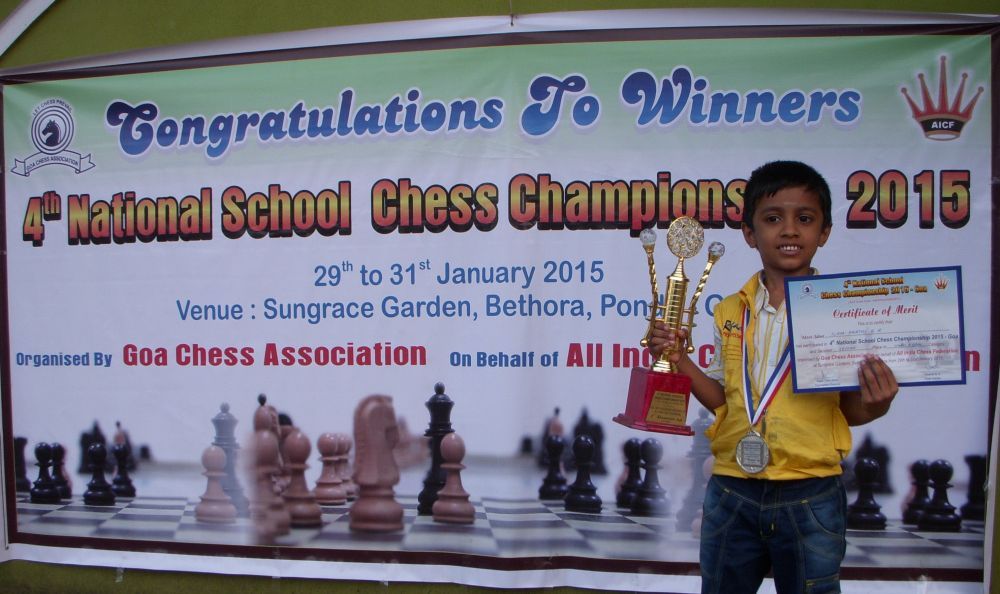
Let us support Ilamparthi's chess career by helping him in whatever way possible. Who knows your small contribution now, can help us create the next super-talent who will take the world of chess by storm just like Praggnanandhaa and Nihal Sarin!
ChessBase India is offering ChessBase 14 software to Ilamparthi to help him prepare better for his upcoming Asian Championships. In case you would like to contribute, here are the details:
V. Ravikumar (father): 09976886666, amsravi@gmail.com
Notable achievements of Ilamparthi:
- Ranked World No.1 Under-8 chess player with a FIDE ELO rating of 1764 as per recent FIDE rating released on Feb 2017
- Ranked India No.1 Under-9 chess player with a FIDE ELO rating of 1764 as per recent FIDE rating released on Feb 2017
- Increased 235 ELO points in one month Jan 2017
- One of the youngest FIDE rated player in India (Opened rating at the age of 5 years 6 months)
- Secured prize in National Schools Chess Championship which he played 2014 (Gold at New Delhi), 2015 (Silver at Goa) and 2016 (Gold at Maharashtra)
- Secured price in all Tamil Nadu State selection Under-7 tournament which he played 2014 (6th place at Hosur), 2015 (Silver at Erode) and 2016 (Gold at Chennai)
- Gained 133 ELO points in Karur Fide Rating Below 1600 All India Chess Tournament-2016 and Placed 17th rank in OPEN tournament where 527 players participated. Even he was the one of youngest participant.
- Gained 128 ELO points in Delhi International Open Chess Tournament 2017 and Placed 1st in Under-9 Category where more than 600 players participated.
National Level:
- Silver Medal winner in 30th National Under-7 open Chess Championship 2016 held at Pondicherry from 19th Sep 2016 to 27th Sep 2016
- 9th Place (at the Age of 7) in 30th National Under-9 Chess Championship 2016 held at Jalandhar, Punjab from 22nd Aug 2016 to 30th Aug 2016
- 1st Place in 5th National School Chess Championship-2016 U-7 Open Category held at Nagpur, Maharastra from 5th Jan 2016 to 7th Jan 2016
- Board Prize winner in CBSE South Zone Chess Team Tournament 2015-16 (U-10 Boys) held at Secunderabad, Telangana from 8th Oct 2015 to 10th Oct 2015
- 4th Place CBSE NATIONAL INDIVIDUAL CHESS CHAMPIONSHIP 2015 (U 10 MIXED) held at Kolkatta, West Bengal on 12th Dec 2015
- 9th Place (at the Age of 6) in 29th National under 7 Open Chess Championship 2015 held at Chennai, Tamil Nadu.
- 2nd Place in 4th National Schools Chess Championship 2015 U-7 Open held at Goa from 29th Jan 2015 to 31st Jan 2015
- 1st Place in 3rd National Schools Chess Championship 2014 - Open Under-5 held at Delhi from 11th Jun 2014 to 13th Jun 2014

